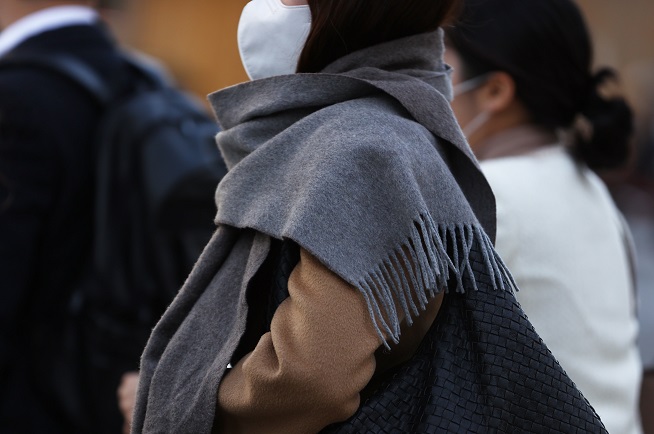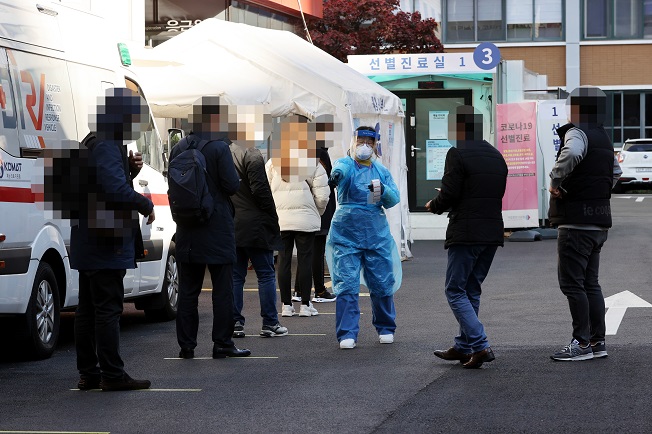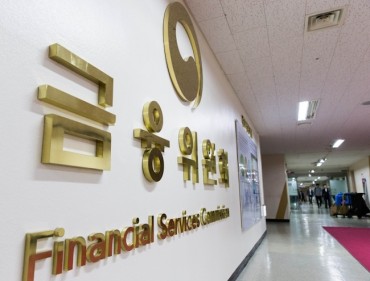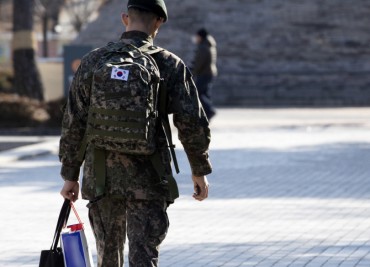SEOUL, Nov. 9 (Korea Bizwire) — South Korea’s new coronavirus cases rose by triple digits for the second day Monday, with a series of cluster infections being reported from venues of everyday life, ranging from markets to family gatherings, straining the country’s anti-virus fight.
The country added 126 more COVID-19 cases, including 99 local infections, raising the total caseload to 27,553, according to the Korea Disease Control and Prevention Agency (KDCA).
It marked a slight drop from 143 cases added on Sunday, but Monday’s caseloads are relatively high given the lower number of tests carried out over the weekend.
South Korea, which has been striving to curb COVID-19 from hospitals and nursing homes, recently saw more sporadic cluster infections at risk-prone facilities, such as nursing homes and private gatherings.
Over the past two weeks, around 35.7 percent of the newly added cases have been group infections, with some 13.6 percent not having clear transmission routes.
“When it comes to small-sized cluster infections, it is more complicated to identify their transmission routes,” a local health official said during a daily briefing, adding the country will speed up efforts to curb the spread of the virus nationwide.
To identify possible “silent spreaders” who are infected with COVID-19 but do not have related symptoms, South Korea plans to carry out tests on people at all senior nursing homes across the country starting Monday.
Health authorities previously carried out all-out examinations for those in the greater Seoul area.
Seniors are considered to be more vulnerable to COVID-19 than younger people. So far, more than 80 percent of people who died of the virus here were aged 70 and above.
The country adopted the lowest level of its social distancing scheme Saturday under revised five-tier infection preventive measures. The country previously operated a three-tier system.
Level 1 — the lowest in the five-tier scheme — signifies a controllable level of transmission that allows people to carry on with their ordinary lives while wearing masks and following social distancing rules at designated facilities.
But health authorities warned that the Level 1.5 scheme can be applied nationwide if the daily virus curve does not flatten soon. The higher social distancing level has been in place in Asan and Cheonan, both located in central South Chungcheong Province.
The capital city of Seoul accounted for 39 cases, followed by Gyeonggi Province that surrounds Seoul with 21. Incheon, west of Seoul, reported one new case, while Gangwon Province added 11 cases.
The greater Seoul area accounts for around half of the nation’s population.

A commuter wearing a protective mask walks near Gwanghwamun Square in central Seoul on Nov. 9, 2020. (Yonhap)
The southeastern city of Daegu added six new cases and North Chungcheong Province reported two more infections. South Chungcheong Province saw 10 additional infections. North and South Jeolla Provinces added three and two cases each.
A commercial building in southern Seoul added three more patients as of Monday noon, raising the tally to 16.
A sauna facility in southern Seoul reported two additional COVID-19 cases, with the total caseload reaching 44.
A total of 67 cases were traced to a golf gathering from Yongin, south of Seoul.
A bank in Suncheon, 415 kilometers south of Seoul, identified six more patients, raising the total to seven.
Health authorities said they remain vigilant over potential cases tied to Halloween parties from late October as well, although no infections tied to related gatherings have been reported.
The country added 27 imported cases.
Five of the newly added imported infections were Russian nationals, followed by four Americans. Others included those traced to Myanmar, India, and Italy.
“Infections are rising sharply around the globe. The U.S. alone is reporting more than 100,000 patients on a daily basis,” the official also said.
“Although South Korea’s figures are relatively lower than those in the U.S. or Europe, we need to stay alert as sporadic cluster infections are lingering from communities.”
The number of seriously or critically ill COVID-19 patients came to 57, down one from Sunday.
The KDCA reported two additional deaths, raising the total to 480. The fatality rate was 1.74 percent.
Later on Monday, the agency reported four more deaths, with all the deceased in their 60s or older.
Compared with the last week of October when the death toll stood at seven, the first week of November saw the tally nearly double to 13. All of the patients had underlying medical conditions, and eight of them were in their 80s.
The number of people released from quarantine after making full recoveries stood at 25,029, up 61 from the previous day. This indicates around 90.8 percent of the COVID-19 patients reported here being fully cured.
South Korea has carried out 2,709,199 COVID-19 tests, including 6,319 from the previous day. The country normally carries out more than 10,000 tests on weekdays, which indicates that the daily new infections can further rise down the road this week.
(Yonhap)







